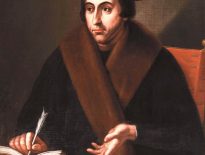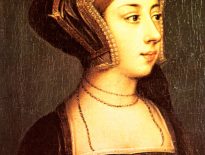On this day in Tudor history, 5th March 1549, a bill of attainder was passed against Thomas Seymour, Baron Sudeley, uncle of King Edward VI, finding him guilty of 33 counts of treason.
In today's video, I explain what happened and share some of the charges laid against this brother of Queen Jane Seymour.
You can find out more about Thomas Seymour's alleged attempt to kidnap the young Kind Edward VI in my video for 16 January - at https://youtu.be/EPxknjmtU8Q
You may also be interested in my Claire Chats video talk - Thomas Seymour: A sexual predator?
Also on this day in history:
- 1496 - King Henry VII of England issued letters patent to John Cabot (Giovanni Caboto), the Italian navigator and explorer. Click here to read more.
- 1558 – Smoking tobacco was introduced in Europe by Francisco Fernandes.
- 1563 – Birth of Sir John Coke, politician and influential administrator during Charles I's reign.
- 1572 – Death of Edward Hastings, Baron Hastings of Loughborough, nobleman and soldier. In July 1553, when Lady Jane Grey became queen, he was involved in assembling supporters of Princess Mary in the Thames Valley and became one of Mary's trusted confidants. In the reign of Elizabeth I he was imprisoned in the Tower for hearing mass, but was released after taking the oath of supremacy.
- 1575 – Birth and baptism of William Oughtred, the mathematician responsible for developing a straight slide-rule, a gauging rod and various sundials. He also introduced the "×" symbol for multiplication and the abbreviations "sin" and "cos" for the sine and cosine functions.
- 1618 – Burial of Robert Abbot, Bishop of Salisbury, in Salisbury Cathedral.



33 counts of treason, no arguing with that. Thomas Seymour was an ambitious man, possibly a sexual predator, although the evidence has to be taken with caution as much was under the threat of torture, but he was certainly looking for a way to control the throne. He was in love with Catherine Parr before she became Queen, so his proposal to her was probably genuine. However, he clearly believed he could do better and tried for the Lady Mary and Lady Elizabeth. I believe he found Elizabeth attractive and wanted to marry her as she was young and potentially fertile, of marriage age, she was a root to the throne and I think she was actually flattered but not interested. Elizabeth could not marry without the leave of the Council and was wealthy, thanks to her father. Mary also had wealth and land and she would use those lands to gather support in order to regain her rights as Queen, as Henry’s next true heir. Tom Seymour was not a man who thought things out. He seems to want his own way and he will do anything to get it. Maybe he was a predictor or maybe he is just erratically ambitious, the evidence is mixed and unclear, but Elizabeth did herself no favours either. She didn’t exactly turn him down and got caught up in this entire swamp of a plot, leading to accusations of him trying to kidnap the young King Edward, to threaten the King and plotting to do this. Elizabeth was thought to be in on the conspiracy and Seymour wanting to marry her looked like a conspiracy. She was able to talk her way out of it and probably wasn’t involved, but it was a close run thing.